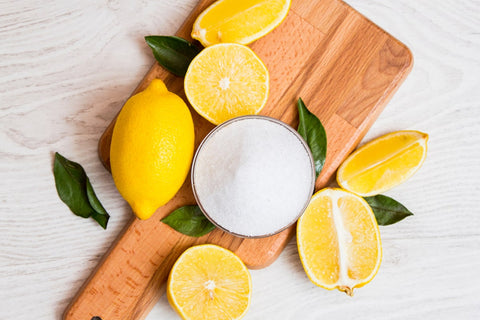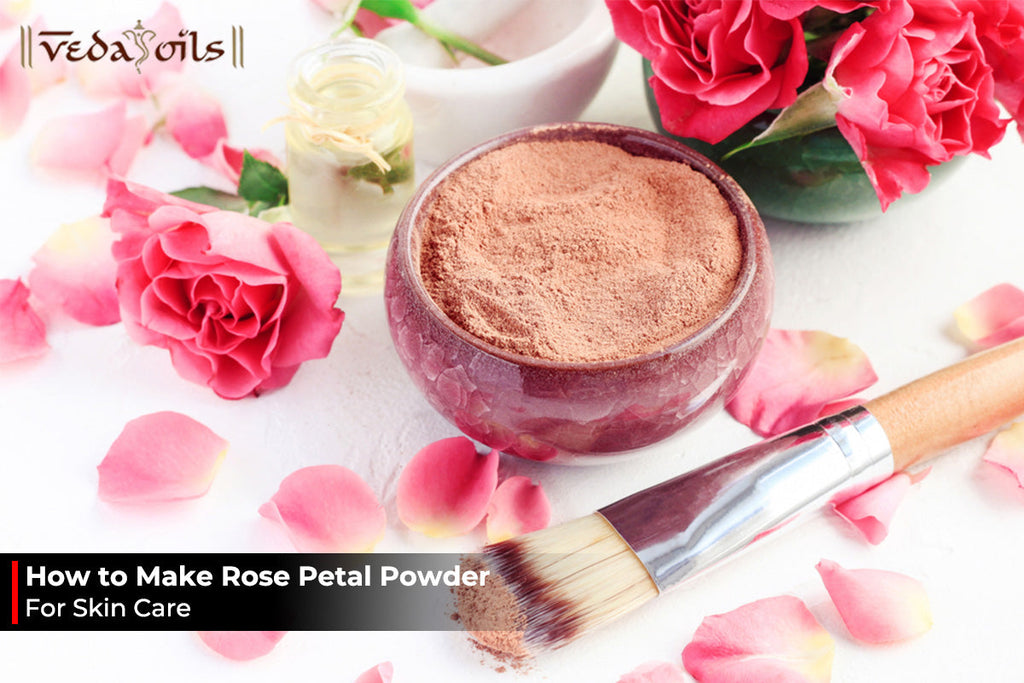Citric Acid Solution for Cleaning: Using Methods
Citric acid is a versatile, eco-friendly cleaning agent that can tackle various household cleaning tasks. Its natural acidic properties effectively remove stains, mineral deposits, and grime, leaving surfaces sparkling clean.

Whether you want to clean your kitchen, bathroom, or even appliances, citric acid can be a valuable addition to your cleaning arsenal. In this guide, we will explore different ways to use citric acid solution for cleaning and discover their power in maintaining a fresh and hygienic home environment.
How to Prepare Citric Acid Solution for Cleaning?
Citric Acid solution is simple and cost-effective to make at home. All you need is citric acid powder and water. Start by ensuring a clean, empty container for mixing and storing the solution. Then, follow these steps to make citric acid solution for cleaning:

Materials You Will Need
1. Citric Acid Powder: Purchase citric acid powder from a local store or online supplier. Ensure that it is food-grade and suitable for cleaning purposes.
2. Water: You'll need clean, preferably warm water to dissolve the citric acid powder and create the solution.
3. Measuring Spoon: A spoon will help accurately measure the desired amount of citric acid powder.
4. Mixing Container: Find a clean container large enough to hold the desired quantity of solution. It should have a tight-fitting lid for storage if needed.
5. Stirring Utensil: Use a spoon or whisk to thoroughly mix the citric acid powder with water until completely dissolved.
6. Spray Bottle (Optional): If you prefer a sprayable citric acid solution, you can transfer the prepared solution into a spray bottle for easy application.
Instructions

Step 1: Measure the Citric Acid: Using a spoon, measure the desired amount of citric acid powder based on your cleaning needs. For general cleaning purposes, a ratio of 1 tablespoon (15 grams) of citric acid powder to 1 cup (240 ml) of water is commonly used.
Step 2: Dissolve the Citric Acid: Add the measured citric acid powder to a mixing container. Gradually pour warm water into the container while stirring continuously. Continue stirring until the citric acid powder is completely dissolved.
Step 3: Adjust the Concentration (Optional): Depending on the cleaning task, you can adjust the concentration of the solution. You may increase the amount of citric acid powder for tougher stains or buildup. Be cautious and follow safety guidelines when using higher concentrations.
Step 4: Transfer to a Storage Container (Optional): If you have prepared a larger quantity of citric acid solution, you can transfer it to a storage container with a tight-fitting lid.
Step 5: Use as a Cleaning Solution: Dip a clean cloth or sponge into the prepared citric acid solution and apply it to the surface you wish to clean. Scrub gently to remove stains, mineral deposits, or grime. After cleaning, thoroughly rinse the surface with water.
Step 6: Safety Precautions: When handling citric acid powder or the solution, wear gloves and avoid contact with eyes or skin. Follow any additional safety instructions provided on the citric acid packaging.
How to Use a Citric Acid Solution for Cleaning?
Using a citric acid solution for cleaning is an effective and eco-friendly way to tackle various household cleaning tasks. Citric acid, a natural compound derived from citrus fruits, offers excellent cleaning properties and can remove stains, dissolve mineral deposits, and eliminate odors. Here's a step-by-step guide on how to use a citric acid solution for cleaning:

Step 1: Removing Hard Water Stains: Citric acid is highly effective in removing hard water stains from faucets, showerheads, and other fixtures. Add a cloth or sponge to the citric acid solution to the stained area. Leave it to rest for a few minutes before washing gently. After rinsing with water, wipe dry.
Step 2: Cleaning Kitchen Appliances: Citric acid can clean various kitchen appliances, such as coffee makers, kettles, and dishwashers. Follow the appliance manufacturer's instructions for descaling and use the citric acid solution as a substitute for commercial descaling agents. Run a cleaning cycle with the solution or soak removable parts, then rinse thoroughly.
Step 3: Descaling a Toilet: To remove mineral deposits and limescale from a toilet bowl, pour the citric acid solution directly into the bowl. Let it sit for a few hours or overnight to dissolve the deposits. Scrub the bowl with a toilet brush, then flush to rinse away the residue.
Step 4: Cleaning Glass and Mirrors: Dilute the citric acid solution with water in a spray bottle (1 part citric acid solution to 4 parts water) and use it as a glass and mirror cleaner. Spray the solution onto the surface, wipe with a clean cloth or paper towel, and buff for a streak-free shine.
Step 5: Removing Soap Scum: Spray the citric acid solution onto surfaces affected by soap scum, such as shower walls or bathtub surfaces. Allow a few minutes to pass before scrubbing with a brush or sponge. Rinse thoroughly with water to remove the residue.
Step 6: Deodorizing and Disinfecting: The acidic nature of citric acid makes it effective in neutralizing odors and disinfecting surfaces. Spray the citric acid solution onto areas with unpleasant odors, such as garbage bins or pet litter boxes. Allow it to settle for a few minutes before wiping it clean.
Step 7: Cleaning Stainless Steel: Citric acid can be used to remove stains and restore the shine of stainless steel surfaces. Apply the citric acid solution to a soft cloth or sponge and rub it onto the stainless steel surface in a circular motion. Rinse effectively with water and dry with a clean cloth.
Step 8: Removing Rust: Citric acid can help remove rust stains from various surfaces, including metal tools and fixtures. Mix citric acid powder with a tiny amount of water to make a paste. Apply the paste to the rusted area, let it sit for a few hours, then scrub with a brush. Rinse and dry thoroughly.
Step 9: Unclogging Drains: Citric acid can be a natural alternative to chemical drain cleaners. Mix the citric acid powder with hot water and pour it down the drain. Let it sit for a few minutes, then flush with boiling water to help dissolve grease, soap residue, and mineral buildup.
Step 10: Removing Carpet Stains: For carpet stains, mix a small amount of citric acid powder with water to form a paste. Apply the paste on the stain and carefully rub it in for a few minutes. Rinse the area with water after blotting it with a clean cloth or sponge.
Conclusion
Incorporating citric acid solution for cleaning can be a game-changer for tackling tough stains, limescales, and odors. To enhance your cleaning experience, consider using high-quality citric acid solutions from VedaOils. With their commitment to purity and excellence, VedaOils provides reliable products to help you achieve sparkling results while maintaining a safe and eco-friendly cleaning environment.
FAQs: How to Use Citric Acid Solution for Cleaning
Q1: Is Citric Acid Solution Safe To Use Around Children And Pets?
Ans: Yes, citric acid solution is generally safe to use around children and pets. However, it is always advisable to keep cleaning solutions out of their reach and ensure proper ventilation during cleaning.
Q2: Can I Use Citric Acid Solution On All Surfaces?
Ans: Citric acid solution is safe on most surfaces, including stainless steel, glass, ceramic, and plastic. However, it is always recommended to spot-test a small area before applying it to larger surfaces to ensure compatibility.
Q3: Can I Mix The Citric Acid Solution With Other Cleaning Agents?
Ans: Mixing citric acid solution with other cleaning agents is generally not recommended, as it may produce hazardous fumes or ineffective cleaning results. Using the citric acid solution independently or as directed in specific cleaning recipes is best.
Q4: How Long Does A Citric Acid Solution Last?
Ans: A properly stored citric acid solution can last several months to a year. It is essential to store it in an airtight container, away from direct sunlight and moisture, to maintain its effectiveness.
You May Also Like:
Buy Products
Related Articles
-
 Kojic Acid vs. Glycolic Acid: Which Is Better for Skin Whitening?
Kojic Acid vs. Glycolic Acid: Which Is Better for Skin Whitening? -
 5 Best Grades of Essential Oils - The Grading System
5 Best Grades of Essential Oils - The Grading System -
 How to Make Rose Petal Powder For Skin Care Homemade Recipe
How to Make Rose Petal Powder For Skin Care Homemade Recipe -
 Homemade Coffee Scrub Soap Recipe for Face & Body Care
Homemade Coffee Scrub Soap Recipe for Face & Body Care -
 DIY Rose Sugar Scrub - Best Homemade Recipes For Smooth Skin
DIY Rose Sugar Scrub - Best Homemade Recipes For Smooth Skin -
 Homemade DIY Tattoo Balm Recipe : Healing Tattoo Balm
Homemade DIY Tattoo Balm Recipe : Healing Tattoo Balm
Disclaimer :- This article is intended for informational and educational purposes only and should not be considered a substitute for professional medical advice. For specific health concerns or treatment, please consult your personal physician. The article's editor, writer, and VedaOils organization do not assume any responsibility for any health outcomes resulting from the information provided. Readers are strongly encouraged to seek advice from their physician before acting on any recommendations made in these articles.

















 Sign in
Sign in Register now
Register now My Reward Points
My Reward Points








